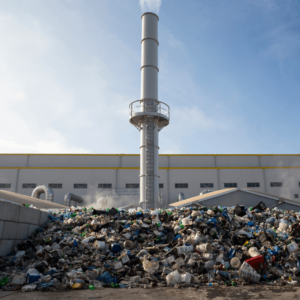HOW TO ENSURE YOUR EFW PLANT COMPLIES WITH ENVIRONMENTAL REGULATIONS
Recently, the Department for Business, Energy and Industrial Strategy (BEIS) announced that Energy from waste (EfW) plants will be eligible to apply for proposed government support to roll out carbon capture, usage and storage (CCUS) technology, a positive move which could reduce global carbon dioxide emissions by almost a fifth and reduce the cost of tackling the climate crisis by 70%.
However, as of 2020, there were only 20 CCUS projects operating commercially and it could take years to reach a stage in which this technology is fully integrated into the waste management sector, so what can EfW facilities do in the meantime to quash increasing waste emissions, control their CO2 levels and comply with environmental regulations set by the Environmental Agency (EA)?
 ENVIRONMENTAL IMPACT OF EFW
ENVIRONMENTAL IMPACT OF EFW
The thermal process at an EfW produces emissions in the form of acid gases, particulates, dioxins and heavy metals to air. It also poses potential environmental issues through ash residues left behind following the process.
Chemical Analysis
A comprehensive Chemical Analysis of your material can highlight key pollutants and contaminants within your material. Processes such as Ash-residue testing and Carbonate Content tests will provide you with the data and insights required to help you to control these outputs and comply with your environmental regulations.
Waste Composition Analysis (WCA)
Understanding the composition of your input material can also help to forecast the harmful emissions that will be released following the burn. A thorough Waste Compositional Analysis (WCA) can help you to monitor the impact of your process on the environment, helping you to keep within the regulations set by the EA.
ARE YOU COMPLYING WITH ENVIRONMENTAL REGULATIONS?
Speak to an expert today for advice regarding your waste derived fuels by following this link.